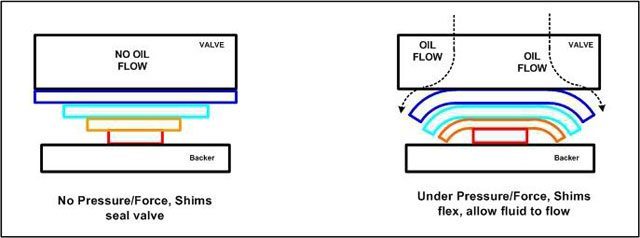 Component: 2010 Marozcchi 888 EVO Ti and 2012 888 RC3 EVO V2 forks
Component: 2010 Marozcchi 888 EVO Ti and 2012 888 RC3 EVO V2 forks
Weights: 2,990g (888 EVO Ti); 3,269g (888 RC3 EVO V2)
Rider: 6’2’’, 205 lbs.
Bike: 2010 Morewood Makalu DH bike with custom-valved Avalanche Woodie rear shock
Location: all over Colorado and Utah
Duration of Test: 100+ days on the 888 EVO Ti, 15+ days now on the RC3 EVO V2
Two sentence review: The newest generation of the Marzocchi 888 with the EVO cartridge (2010 onward) is simply the best DH fork I have ever ridden. It is probably the most plush, most sensitive, highest-performance DH fork on the market, and you really ought to just buy one right now.
But my editor actually requires us to justify our use of superlatives, so I’ll go ahead and support all of those claims with some facts, just to keep everybody happy.
The setup of the EVO Ti and RC3 EVO V2 are basically the same. They ship with a medium tuning spring that will fit most riders from 150-180 pounds or so, but if you are heavier or lighter, Marzocchi can switch out the springs. Be aware that the Ti spring is super expensive (approximately $250), so if you need a different spring, I would suggest contacting Marzocchi directly to order the fork with the correct spring in the first place.
I was too much of a cheapskate to order a new, firm Ti spring, so I dug up an 888 RCV air pre-load cap and swapped it onto the spring-side fork leg. This allowed me to pump a small amount of air (3 psi) into the leg to add spring rate. I would not suggest going over 4-5 psi, as that creates stiction. For my 205 pounds, 3 psi was perfect and did not cause any noticeable adverse feeling in the fork.
I did also add a little oil (approximately 50 cc’s) to the spring leg to limit the air volume and thereby increase the progressiveness of the fork. This helped maintain the incredible small bump compliance but add a firmer mid and end stroke.
Because the EVO cartridge in both forks is a true-shimmed, speed-sensitive damper, adjusting the “compression” dial controls how fast the oil flow hits the shim stack.

So the faster the oil is hitting the valve, the quicker the fork can transition from firm/supportive under braking/cornering, to active and plush (e.g., when slamming the front wheel straight into a rock). I ran my compression nearly wide open (two clicks toward closed from the fully open position) to slow the oil flow just enough to add a touch of stability under hard sprinting bursts.
It is important to note that the compression dial is not to adjust how firm the fork is—it is to adjust the speed of oil flow at the shim stack. My suggestion is to start with the compression set full open, close it off one click at a time with each run, and then start backing it off once you can feel a lag in transition.

To get a firmer or softer compression valving out of the fork, you can adjust the shim stack by adding or removing shims, or changing the thickness (and therefore the willingness of the shim to bend).
In practice, it’s nice to know that such changes in valving are available, but it should be added that unless you are a top-level pro with a deep understanding of fork tuning, the fork is valved perfectly. According to Marzocchi technical services (who are happy to tune the shim stack to whatever you want), less than one percent of users would even consider changing the shim stack, and less than ten percent of those would even understand what was happening when it was altered. Those who do need the change and would understand it are almost exclusively Marzocchi’s top factory riders, or someone with a degree in fluid dynamics.


It appears that the rebound piston isn’t shimmed:
http://www.ridemonkey.com/forums/showthread.php?t=246399&p=3780984&viewfull=1#post3780984
He didn’t say they were.
Zoke forks have always been ported rebound dampers.
But as said in the review, the shimmed compression damper does seem pretty bad ass.
very nice of you to provide the shimstack configuration.
How difficult/secure/ghetto is the air-preload mod? I’ve heard it being done before, same with the 40’s. The main reason I want these with the Ti spring is to save weight, but should I struggle to find one with the medium spring, I’d be happy to run them with the RCV preload if there’s no detriment to performance or longevity.
I live in Whistler and my DH bike gets freaking ravaged by the park so I’m after longevity more so.
hey mitch,
i put over 200 days of rough riding (colorado front range) with no issues on the fork, other than breaking a spring, which was immediately handled and apparently an issue with 2010 forks only.
you run super low pressure (like 2 psi) so its not that big of a deal.
hope that helps.
I hope my question can get some responses. I’ve got a Marz 888 RC3 Evo V2 2012. When I took the fork off the bike, removing it from the crowns, the rebound/ compression leg sags lower by about 2 inches than the preload/spring leg. Do you think this might just be a lack of oil or air? Hope someone can answer. Thanks.